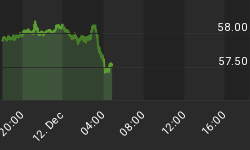The recent Senior Loan Officer Survey (SLOS) by the Federal Reserve Board indicates that U.S. banks are continuing to ease their lending standards on consumer loans (please note the reverse scale on the chart). Consumer confidence is also on the rise.

Sources: FRED; Federal Reserve Board; Plexus Asset Management.
Furthermore, the yield gap between 30-year home mortgage bonds and 30-year government bonds are again testing historical lows.

Sources: FRED; Plexus Asset Management.
By the looks of it the easier money and optimism will support the house market. But do they?
Well, surprise, surprise! Households continue to shun the house market as the SLOS indicates that banks are in fact experiencing a slowdown in demand for mortgage loans.

Sources: Federal Reserve Board; Plexus Asset Management.
At this stage banks are not yet relenting on their tight standards for mortgage loans, but who can blame them given the oversupply in the U.S. market? The question is whether QE2 is in fact producing the necessary results. Obviously not in so far as the housing market is concerned.

Sources: Federal Reserve Board; Plexus Asset Management.
U.S. consumers are probably also fretting about the surge in long-term interest rates and the recent jump in mortgage rates.

Sources: FRED; Plexus Asset Management.
There is some light at the end of the tunnel, though. It seems as if there is a reasonable correlation between house prices and consumer confidence. The latter turning for the better in the final quarter of last year and surging in January may turn out to be positive for the U.S. housing sector.

Sources: FRED; Standard & Poors; Plexus Asset Management.
The outlook for consumer confidence is upbeat if you believe long bond rates.

Sources: FRED; Plexus Asset Management.
Surely that means that the economy has strengthened further, you may ask? Yes, although volatile, the yield on the 10-year government note is in fact a reasonably good indicator of MZM (money zero maturity) and therefore the economy in general. The recent surge in long bond rates indicates that MZM velocity, and therefore the economy, is likely to surge in the current quarter.

Sources: FRED; Plexus Asset Management.
For those who think the U.S. housing market is set to implode further, do not hold your breath.















